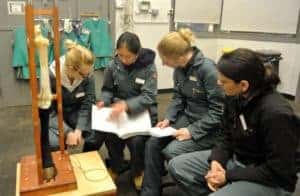
Study: Feral Horses ‘Shop Around’ for Ideal Living Areas
Researchers recently confirmed that feral horses appear to ‘shop around’ based on population density.


Researchers recently confirmed that feral horses appear to ‘shop around’ based on population density.

Researchers recently accepted the challenge of producing onager foals via artificial insemination.

The simulator allows students practice joint injections before trying their hands at injecting a live horse.

Find out how veterinarians are preparing with less than a year to go before the 2014 World Equestrian Games.

Researchers say third trochanter fractures probably aren’t career ending and generally heal without surgery.
Bonfire was euthanized Monday (Oct. 28) due to complications from Cushing’s disease and laminitis.

To better manage disease outbreaks, Swiss owners must now register horses and report movement to officials.

Researchers confirmed that horses retain what they learned a long time ago–for better or for worse.

Osteochondral lesions on young horses’ X rays might appear worrisome, but surgery isn’t always necessary.

Traces of the tranquilizer drug reserpine were found in a blood sample from Clifton Promise.

Learn what steps one researcher recommends horse industry members take to improve horse welfare perceptions.

Researchers believe variables such as breed and geographic location might impact horses’ blood test results.

Colors displayed by Doppler ultrasonography could help vets better follow tendonitis’ healing processes.

Study results suggest that even if horses don’t seem to mind clipping, they might still find it stressful.

Researchers determined that it’s the sire’s genes that take the lead in developing the mare’s placenta.

This revived species could offer scientists some exciting equine research opportunities.
Stay on top of the most recent Horse Health news with